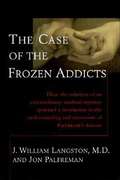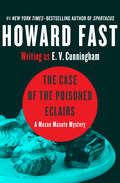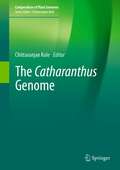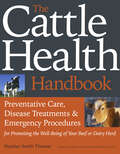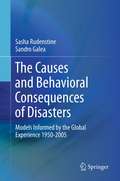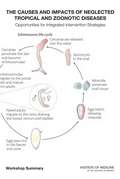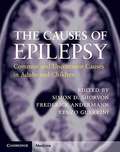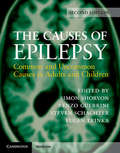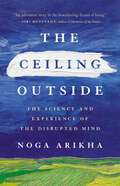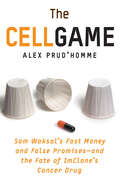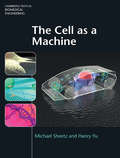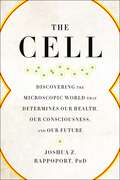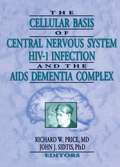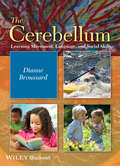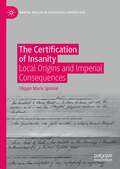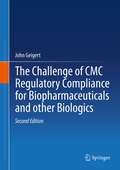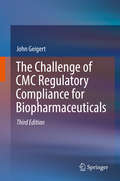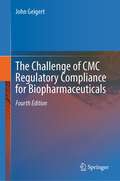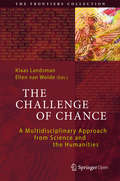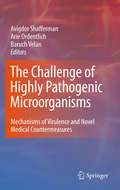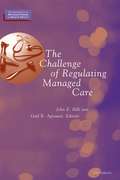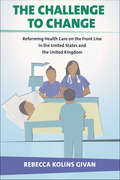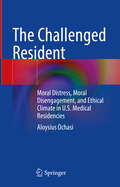- Table View
- List View
The Case of the Frozen Addicts
by Jon Palfreman J. LangstonIn this riveting book, neurosurgeon J. William Langston and writer Jon Palfreman recount the bizarre and far-reaching mystery of six patients who arrived at San Francisco area emergency rooms after using a synthetic analogue of heroin. Fully conscious but unable to move or speak, they were soon diagnosed by Langston as having advanced Parkinson's disease. This spellbinding book offers a stunning report on these baffling cases. of photos.
The Case of the Poisoned Eclairs: A Masao Masuto Mystery (The Masao Masuto Mysteries #4)
by Howard FastA dog&’s murder leads detective Masuto to a most unusual poisoning caseIn Beverly Hills, murder has suddenly gone out of style. For five weeks, the head of the city&’s tiny homicide squad, Zen detective Masao Masuto, has worked only robbery investigations. But after more than a month without a corpse, this dry spell is about to end. The dead woman is Ana Fortez, a Chicana whose death was originally classified as terminal food poisoning brought on by a feast of botulism-infested éclairs. But because botulism can only grow in an airtight space, the medical examiner warns Masuto that the fatal bacteria must have been purposefully injected into the pastry. When a wealthy housewife&’s dog drops dead after munching on premium chocolates, Masuto finds that her bonbons have been laced with the same toxin. He begins a search for a killer targeting the sweet tooth of Beverly Hills—proof that crime in Southern California never stays boring for long. This ebook features an illustrated biography of Howard Fast including rare photos from the author&’s estate.
The Catharanthus Genome (Compendium of Plant Genomes)
by Chittaranjan KoleThis book is the first comprehensive compilation of deliberations on botany, medicinal importance, genetic diversity, classical genetics and breeding, in vitro biosynthesis, somatic embryogenesis, genetic transformation, molecular mapping, genome sequence, and functional genomics of Catharanthus roseus. Catharanthus is the most important medicinal plant in the world that contains about 130 therapeutic alkaloids out of which vinblastine and vincristine are the two highly used anticancer drugs sold by the pharmaceutically industries. Altogether, the book contains about 10 chapters authored by globally reputed experts on the relevant field of this plant. This book is useful to the students, teachers and scientists in the academia and relevant private companies interested in horticulture, genetics, breeding, pathology, entomology, physiology, molecular genetics and breeding, in vitro culture and genetic engineering, and structural and functional genomics. This book is also useful to pharmaceutical industries.
The Cattle Health Handbook: Preventative Care, Disease Treatments And Emergency Procedures
by Heather Smith ThomasIn this practical guide, Heather Smith Thomas provides easy-to-execute solutions for a variety of common medical situations that can afflict your animals, including bacterial diseases, parasites, and nutritional deficiencies.
The Causes and Behavioral Consequences of Disasters
by Sandro Galea Sasha RudenstineThe Causes and Behavioral Consequences of Disasters brings a public health perspective to the literature, reflecting the increasing importance of the field in both disaster preparedness and disaster response. Arguing that a disaster is not only the event but its aftermath as well, the authors apply salient local content to the study of scenarios ranging from the Cuzco, Peru, earthquake of 1950 to the Columbine school shooting, the Oklahoma City bombing, and 9/11. These case studies form the basis for models of vulnerabilities to disasters and population behavior following disasters, illustrating how careful pre-event planning and coordinated post-event response strategies can minimize the initial damage and negative aftereffects. The Causes and Behavioral Consequences of Disasters will further professional discussion and understanding among a wide range of professionals and students across public health, mental health, education, health administration and policy, social work, and the social sciences.
The Causes and Impacts of Neglected Tropical and Zoonotic Diseases: Opportunities for Integrated Intervention Strategies
by Institute of Medicine of the National AcademiesNeglected tropical diseases (NTDs) afflict more than 1.4 billion people, many of whom live on less than $1.25 a day. While there are effective ways to manage NTDs, policy-makers and funders have only recently begun to recognize the economic and public health importance of controlling NTDs. The IOM's Forum on Microbial Threats held a workshop September 21-22, 2010, to discuss the science of and policy surrounding NTDs.
The Causes of Epilepsy
by Renzo Guerrini Simon D. Shorvon Frederick AndermannCausation is an aspect of epilepsy neglected in the scientific literature and in the conceptualization of epilepsy at a clinical and experimental level. It was to remedy this deficiency that this book was conceived. The book opens with a draft etiological classification that goes some way to filling the nosological void. The book is divided into four etiological categories: idiopathic, symptomatic, cryptogenic, and provoked epilepsies. Each chapter considers topics in a consistent fashion, dealing with the phenomenon of epilepsy in each etiology, including its epidemiology, clinical features and prognosis, and any specific aspects of treatment. The book is a comprehensive reference work, a catalogue of all important causes of epilepsy, and a clinical tool for all clinicians dealing with patients who have epilepsy. It is aimed at epileptologists and neurologists and provides a distillation of knowledge in a form that is helpful in the clinical setting.
The Causes of Epilepsy: Common and Uncommon Causes in Adults and Children
by Renzo Guerrini Steven Schachter Simon Shorvon Eugen TrinkaThe identification of the cause of an epileptic seizure is a key element in the clinical management of all patients. In recent decades, advances in theory, neuroimaging, molecular genetics and molecular chemistry have revolutionized our ability to investigate and identify the underlying cause. The definitive and unrivalled textbook on the causes of epilepsy, this second edition is extensively revised and expanded. It provides concise descriptions of all the major genetic and acquired conditions that cause epilepsy in adults and children, and the provoking factors for epileptic seizures and of the causes of status epilepticus. A new section considers clinical approaches to diagnosing causes, to guide and assist clinicians in investigations. With 129 chapters written by leading figures from around the world, this comprehensive and authoritative resource is indispensable to senior and junior clinicians and trainees working in the field of epilepsy, including specialists in neurology, paediatrics, neurophysiology, psychiatry and neurosurgery.
The Caveman Within Us: HIS PECULIARITIES AND POWERS: HOW WE CAN ENLIST HIS AID FOR HEALTH (International Library Of Psychology Ser.)
by Fielding, William JFirst Published in 1999. Routledge is an imprint of Taylor & Francis, an informa company.
The Ceiling Outside: The Science and Experience of the Disrupted Mind
by Noga ArikhaAs her mother slips into the fog of dementia, a philosopher grapples with the unbreakable links between our bodies and our sense of self. A diabetic woman awakens from a coma having forgotten the last ten years of her life. A Haitian immigrant has nightmares that begin bleeding into his waking hours. A retired teacher loses the use of her right hand due to pain of no known origin. Noga Arikha began studying these patients and their confounding symptoms in order to explore how our physical experiences inform our identities. Soon after she initiated her work, the question took on unexpected urgency, as Arikha&’s own mother began to show signs of Alzheimer&’s disease. Weaving together stories of her subjects&’ troubles and her mother&’s decline, Arikha searches for some meaning in the science she has set out to study. The result is an unforgettable journey across the ever-shifting boundaries between ourselves and each other.
The Cell Game: Sam Waksal's Fast Money and False Promises—and the Fate of ImClone's Cancer Drug
by Alex Prud'hommeThe “chilling tale” of ImClone Systems, its promising cancer drug, Erbitux, and the insider trading scandal that ensnared Martha Stewart (U.S. News & World Report).The Cell Game is the quintessential business saga of the late 1990s. It's the story of big money and cutting-edge science, celebrity, greed, and slipshod business practices; the story of biotech hype and hope and every kind of excess.At the center of it all stands a single, enigmatic figure named Sam Waksal. A brilliant, mercurial, and desperate-to-be-liked entrepreneur, Waksal was addicted to the trappings of wealth and fame that accrued to a darling of the stock market and the overheated atmosphere of biotech IPOs. At the height of his stardom, Waksal hobnobbed with Martha Stewart in New York and Carl Icahn in the Hamptons, hosted parties at his fabulous art-filled loft, and was a fixture in the gossip columns. He promised that Erbitux would "change oncology," and would soon be making $1 billion a year.But as Waksal partied late into the night, desperate cancer patients languished, waiting for his drug to come to market. When the FDA withheld approval of Erbitux, the charming scientist who had always stayed just one step ahead of bankruptcy panicked and desperately tried to cash in his stock before the bad news hit Wall Street.Waksal served time in prison, the first of the Enron-era white-collar criminals to be sentenced. Yet his cancer drug has proved more durable than his evanescent profits.“A fast-paced, absorbing, and dramatic account . . . An important, excellent book that makes for fascinating reading.” —Library Journal
The Cell as a Machine (Cambridge Texts in Biomedical Engineering)
by Michael Sheetz Hanry YuThis unique introductory text explains cell functions using the engineering principles of robust devices. Adopting a process-based approach to understanding cell and tissue biology, it describes the molecular and mechanical features that enable the cell to be robust in operating its various components, and explores the ways in which molecular modules respond to environmental signals to execute complex functions. The design and operation of a variety of complex functions are covered, including engineering lipid bilayers to provide fluid boundaries and mechanical controls, adjusting cell shape and forces with dynamic filament networks, and DNA packaging for information retrieval and propagation. Numerous problems, case studies and application examples help readers connect theory with practice, and solutions for instructors and videos of lectures accompany the book online. Assuming only basic mathematical knowledge, this is an invaluable resource for graduate and senior undergraduate students taking single-semester courses in cell mechanics, biophysics and cell biology.
The Cell: Discovering the Microscopic World that Determines Our Health, Our Consciousness, and Our Future
by Joshua Z. RappoportYour body has trillions of cells, and each one has the complexity and dynamism of a city. Your life, your thoughts, your diseases, and your health are all the function of cells. But what do you really know about what goes on inside you? The last time most people thought about cells in any detail was probably in high school or a college general biology class. But the field of cell biology has advanced incredibly rapidly in recent decades, and a great deal of what we may have learned in high school and college is no longer accurate or particularly relevant. The Cell: Inside the Microscopic World that Determines Our Health, Our Consciousness, and Our Future is a fascinating story of the incredible complexity and dynamism inside the cell and of the fantastic advancements in our understanding of this microscopic world. Dr. Joshua Z. Rappoport is at the forefront of this field, and he will take you on a journey to discover: A deeper understanding of how cells work and the basic nature of life on earth. Fascinating histories of some of the key discoveries from the seventeenth century to the last decade and provocative thoughts on the current state of academic research. The knowledge required to better understand the new developments that are announced almost weekly in science and health care, such as cancer, cellular therapies, and the potential promise of stem cells. The ability to make better decisions about health and to debunk the misinformation that comes in daily via media. Using the latest scientific research, The Cell illustrates the diversity of cell biology and what it all means for your everyday life.
The Cellular Basis of Central Nervous System HIV-1 Infection and the AIDS Dementia Complex
by Richard W Price John J SidtisIn this exciting symposium, the editor brings to print important new information on AIDS and how HIV affects the brain. Each chapter focuses on one or more of the cell types that reside in or traffic through the central nervous system (CNS). Each of these cells is important to considerations of the pathogenesis of the CNS. Neurologists, AIDS physicians, and other professionals caring for AIDS patients will find that this “cell-based” view provides a unique perspective and that it will guide and stimulate future investigation of this clinically important and pathogenetically intriguing disorder. The editor also introduces some general considerations for therapeutic intervention of AIDS dementia complex (ADC).The contributors to The Cellular Basis of Central Nervous System HIV-1 Infection and the AIDS Dementia Complex deal with the cells and mechanisms involved in HIV-1 brain infection and the resultant ADC. Each author was asked to review the involvement of their assigned cells in CNS HIV-1 infection and how these cells might be involved in the pathology and process of brain injury associated with ADC. Readers will be enlightened on the functional roles of various cells and how these cells and mechanisms might fit into the broader picture of ADC pathogenesis.
The Centrosome and its Functions and Dysfunctions (Advances in Anatomy, Embryology and Cell Biology #235)
by Heide SchattenThe book provides a comprehensive overview of classic and modern approaches of centrosome research, including new aspects of centrosome functions focusing on primary cilia and their implications in numerous diseases. In addition, several chapters raise awareness of centrosomes in areas that have not yet fully considered the centrosome as an organelle that impacts other organelle functions directly or indirectly. It further relates centrosome functions to other research areas such as aging and stem cell research. Since its discovery almost 150 years ago the centrosome is increasingly being recognized as a most impactful organelle for its role, not only as primary microtubule organizing center (MTOC) but also as a major communication center for signal transduction pathways and as a center for proteolytic activities. Its significance for cell cycle regulation has been well studied and we now also know that centrosome dysfunctions are implicated in numerous diseases and disorders including cancer, cystic diseases of the kidney, liver fibrosis, cardiac defects, obesity and several other diseases and disorders. This new volume reviews the latest advances in the field and provides valuable background information that is readily understandable for the newcomer and the experienced centrosome researcher alike. Due to the interdisciplinary of the subject, it is a valuable resource for researchers and clinicians working in biomedical research, cell biology, cancer biology, reproduction and developmental biology, neuroscience and stem cell research.
The Cerebellum: Learning Movement, Language, and Social Skills
by Dianne M. BroussardThe Cerebellum provides a concise, accessible overview of modern data on physiology and function of the cerebellum as it relates to learning, plasticity, and neurodegenerative diseases. Encompassing anatomy and physiology, theoretical work, cellular mechanisms, clinical research, and disorders, the book covers learning and plasticity while introducing the anatomy of the cerebellum. Known and proposed "functions of the cerebellum" are addressed on clinical, physiological, cellular, and computational levels, providing academics, researchers, medical students, and graduate students with an invaluable reference.
The Certification of Insanity: Local Origins and Imperial Consequences (Mental Health in Historical Perspective)
by Filippo Maria SposiniThis book represents the first systematic study of the certification of lunacy in the British Empire. Considering a variety of legal, archival, and published sources, it traces the origins and dissemination of a peculiar method for determining mental unsoundness defined as the ‘Victorian system’. Shaped by the dynamics surrounding the clandestine committal of wealthy Londoners in private madhouses, this system featured three distinctive tenets: standardized forms, independent medical examinations, and written facts of insanity. Despite their complexity, Victorian certificates achieved a remarkable success. Not only did they survive in the UK for more than a century, but they also served as a model for the development of mental health laws around the world. By the start of the Second World War, more than seventy colonial and non-colonial jurisdictions adopted the Victorian formula for making lunacy official with some countries still relying on it to this very day. Using case studies from Europe, the Americas, and the Pacific, this book charts the temporal and geographical trajectory of an imperial technology used to determine a person’s destiny. Shifting the focus from metropolitan policies to colonial dynamics, and from macro developments to micro histories, it explores the perspectives of families, doctors, and public officials as they began to deal with the delicate business of certification. This book will be of interest to scholars working on mental health policy, the history of medicine, disability studies, and the British Empire.
The Challenge of CMC Regulatory Compliance for Biopharmaceuticals
by John GeigertThis book highlights the challenges facing quality assurance/quality control (QA/QC) in today's biopharmaceutical environment and presents the strategic importance and value generated by QA/QC for their involvement in control of manufacturing. It will put into perspective the need for a graded approach to QA/QC from early clinical trials through market approval. Since the first edition published in 2004, there have been more than 50 new regulatory guidances released by the Food and Drug Administration (FDA), European Medicines Agency (EMA) and ICH that affect the CMC regulatory compliance of biopharmaceuticals; also the application of biosimilars has been developed in Europe and is under development in the USA. The revised update will be broadened to include not only biopharmaceuticals (biotech drugs) but also other biologics (vaccines, cell therapy, plasma-derived proteins, etc.)
The Challenge of CMC Regulatory Compliance for Biopharmaceuticals
by John GeigertBiopharmaceuticals (i.e., biological medicines sourced from genetically-engineered living systems) for treatment of human diseases have become a significant percentage of the pharmaceutical industry. And not just the recombinant DNA-derived proteins and monoclonal antibodies (both from the innovators and biosimilars); but now, an increasing awareness of the importance of gene therapy and genetically engineered cellular medicinal products. These biopharmaceuticals are being developed by many companies whose Chemistry, Manufacturing & Control (CMC) teams have varying degrees of familiarity or experience with the CMC strategy and regulatory compliance requirements for these challenging products. Companies clearly plan out the strategy for their clinical study plans, but frequently, the development of a strategy for CMC is an afterthought. Coupled with the complexity of the biopharmaceutical manufacturing processes and products, and this can be a recipe for disaster. The third edition of this book provides insights and practical guidance for the CMC teams to develop an acceptable cost-effective, risk-based CMC regulatory compliance strategy for all biopharmaceuticals (recombinant proteins, monoclonal antibodies, genetically engineered viruses and genetically engineered human cells) from early clinical stage development through market approval. The third edition of this book provides added coverage for the biosimilars, antibody drug conjugates (ADCs), bispecific antibodies, genetically engineered viruses, and genetically engineered cells. This third edition of the book also addresses the heightened pressure on CMC regulatory compliance timelines due to the introduction of expedited clinical pathways moving the clinical development closer to a seamless phase process (e.g., FDA Breakthrough Therapy designation, CBER Regenerative Medicine Advanced Therapy (RMAT) designation, EMA Priority Medicines (PRIME) designation). The Challenge of CMC Regulatory Compliance for Biopharmaceuticals is essential, practical information for all pharmaceutical development scientists, Manufacturing and Quality Unit staff, Regulatory Affairs personnel, and senior management involved in the manufacture of biopharmaceuticals.
The Challenge of CMC Regulatory Compliance for Biopharmaceuticals
by John GeigertEach year for the past three years, there have been about 50 new molecular medicines approved by the United States Food & Drug Administration (FDA), of which approximately 25% were new biopharmaceuticals. Over 200 recombinant proteins, monoclonal antibodies, antibody drug conjugates, fusion proteins, and Fab fragments are now in the marketplace in both the United States of America (USA) and European Union (EU). There are also now over 60 biosimilars available for all major classes of recombinant proteins and monoclonal antibodies. In addition, gene therapies using genetically engineered viruses and genetically engineered cells are now in the marketplace, and continually growing. This degree of change is reflected in the over 400 CMC regulatory compliance references listed in this book that were either issued or updated since the release of the third edition. Deficiencies in biopharmaceutical CMC regulatory compliance rarely result in termination of a product, but in can readily cause months if not years of delay in initiating clinical trials, or advancing clinical development stages, or even market approval. In summary, this book:Updates real-world CMC deficiency examples with current examples;Addresses current FDA and EMA requirements and expectations for CMC regulatory compliance;Now includes CMC regulatory compliance for the new gene-based biopharmaceuticals.
The Challenge of Chance: A Multidisciplinary Approach from Science and the Humanities (The Frontiers Collection)
by Klaas Landsman Ellen WoldeThis book presents a multidisciplinary perspective on chance, with contributions from distinguished researchers in the areas of biology, cognitive neuroscience, economics, genetics, general history, law, linguistics, logic, mathematical physics, statistics, theology and philosophy. The individual chapters are bound together by a general introduction followed by an opening chapter that surveys 2500 years of linguistic, philosophical, and scientific reflections on chance, coincidence, fortune, randomness, luck and related concepts. A main conclusion that can be drawn is that, even after all this time, we still cannot be sure whether chance is a truly fundamental and irreducible phenomenon, in that certain events are simply uncaused and could have been otherwise, or whether it is always simply a reflection of our ignorance. Other challenges that emerge from this book include a better understanding of the contextuality and perspectival character of chance (including its scale-dependence), and the curious fact that, throughout history (including contemporary science), chance has been used both as an explanation and as a hallmark of the absence of explanation. As such, this book challenges the reader to think about chance in a new way and to come to grips with this endlessly fascinating phenomenon.
The Challenge of Highly Pathogenic Microorganisms
by Arie Ordentlich Baruch Velan Avigdor ShaffermanThis book addresses the unique features of four microorganisms that constitute the top bioterror threat agents: Bacillus anthracis; Yersinia pestis, Francisella tularensis and Orthopoxviruses. Side-by-side updated information about their pathogenisis, virulence and epidemiology is provided in a single volume, allowing for evaluation of common features as well as common strategies for defense. Classical microbiological as well as genomic, proteomic & transcriptomic approaches towards development of strategies of novel prophylactic and post-exposure treatment and related aspects of diagnostics and bioforensics are covered. Written by top scientists, this book will be of major interest to all researchers interested in the intricate biology of highly pathogenic microorganisms, to scientists and clinicians interested in microbial pathogenesis and prevention, and to a wide range of professionals dealing with the various aspects of bio-defense.
The Challenge of Regulating Managed Care
by John E. Billi Gail Bopp AgrawalRepresentatives of industry, government, caregivers, and consumers join scholars and policy analysts in comparing market forces to regulation as potential means for righting what is wrong with managed care. The contributors that John E. Billi and Gail B. Agrawal have gathered here quickly move the healthcare debate beyond the classroom, think tank, and statehouse to the boardroom and examining room. Some argue strongly that the solution is to be found in the democratic process and government intervention, while others maintain that only market forces in a competitive environment can respond quickly to the needs of consumers and purchasers alike. The contributors' diverse opinions about the oversight of managed care reflect an enduring divide, one that will affect how society ultimately resolves questions about the inevitable tradeoffs among health-care quality, cost, and access in an environment of limited resources. The Challenge of Regulating Managed Care will appeal to policymakers, those in the medical field, and all readers interested in the American experience with managed care.
The Challenge to Change: Reforming Health Care on the Front Line in the United States and the United Kingdom
by Rebecca Kolins GivanThere is constant pressure on hospitals to improve health care delivery and increase cost effectiveness. New initiatives are the order of the day in the dramatically different health care systems of the United States and Great Britain. Often, as we know all too well, these efforts are not successful. In The Challenge to Change, Rebecca Kolins Givan analyzes the successes and failures of efforts to improve hospitals and explains what factors make it likely that the implementation of reforms will be rewarded by positive transformation in a particular institution's day-to-day operation. Givan's in-depth qualitative case studies of both top-down initiatives and changes first suggested by staff on the front lines of care point clearly to the importance of all hospital workers in effecting change and even influencing national policy.Givan illuminates the critical role of workers, managers, and unions in enabling or constraining changes in policies and procedures and ensuring their implementation. Givan spotlights an Anglo-American model of hospital care and work organization, even while these countries retain their differences in access and payment. Entrenched professional roles, hierarchical workplace organization, and the sometimes-detached view of policymakers all shape the prospects for change in hospitals. Givan provides important examples of how the dedication and imagination of the people who work in hospitals can make all the difference when it comes to providing quality health care even in a challenging economic environment.
The Challenged Resident: Moral Distress, Moral Disengagement, and Ethical Climate in U.S. Medical Residencies
by Aloysius OchasiThe purpose of this timely and stimulating book is to examine the causes and impacts of moral distress among US medical residents. Based on a comprehensive study conducted by the author, the work not only delves into the causes of moral distress among medical residents but also explores how this distress can lead to moral disengagement, potentially resulting in suboptimal clinical care and adverse patient outcomes. The book begins with an overview of existing scholarship on moral distress experienced by practitioners within the medical establishment and its negative psychological impacts. Chapter two discusses how moral distress can lead to moral disengagement and its subsequent effects on patient care. In chapter three, the author explores residents’ perceptions of the role of the "ethical climate" in contributing to moral distress. Chapter four outlines the impetus behind the study and details its methodology. Chapter five reviews the study’s findings, focusing on the relationship between moral distress and moral disengagement, including the influence of the ethical climate within medical institutions. Chapter six summarizes the quantitative and qualitative findings of the study. Chapter seven addresses how these issues were managed during the recent COVID-19 pandemic, when medical personnel were often stressed, overworked, and apprehensive about contracting the virus themselves. Finally, in chapter eight, the author suggests strategies for preventing moral distress and disengagement and provides recommendations for medical residents on managing the inherent stresses of medical training. The Challenged Resident offers a unique and insightful contribution to the clinical literature on ethics and medical residency, enabling clinicians, trainees, administrators, policymakers, and other stakeholders to better understand the pressures and stressors faced by medical residents and to consider strategies and policies that address moral distress, promote resident self-care, foster a more supportive and ethical training environment, and reduce moral disengagement.
